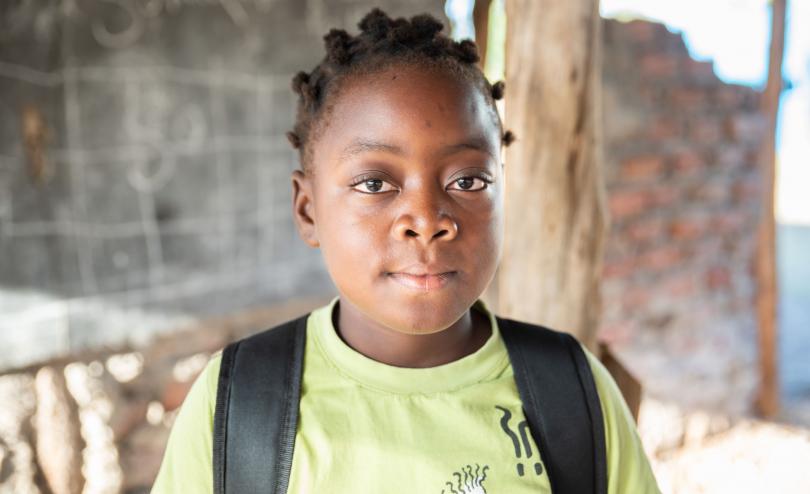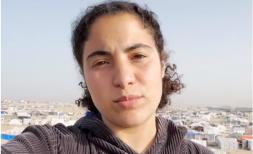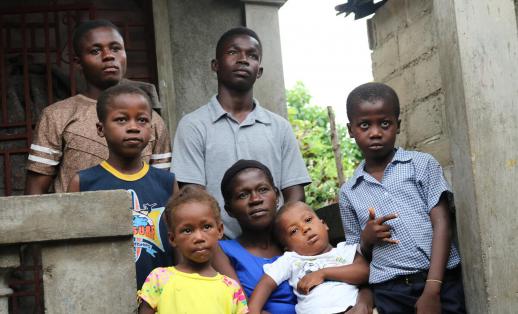How children’s books can help tackle the climate crisis

Miranda, 11, lost her classroom and her home when Cyclone Idai hit Mozambique.
Our planet is amid a rapid and intensifying climate crisis, that threatens children’s right to education, a safe home, a healthy environment, food, and healthcare today and tomorrow. Nearly half of all children globally – one billion in total – live in countries at extremely high risk of the impacts of climate change.[1] Children already impacted by inequality and discrimination are disproportionally affected, including girls, those who are indigenous, displaced or have disabilities.
Data published by Save the Children highlights the intergenerational injustices posed by the climate emergency. It finds that a child born in 2020 will on average face seven times more scorching heat waves during their lives than their grandparents under the original Paris Agreement emission reduction pledges.[2]
The climate crisis is threatening children’s right to learn
Children’s increasing exposure to extreme weather events has serious implications for children’s access to quality education. 75 million children have their education disrupted each year – of which around half are due to environmental threats such as floods and drought.[3] Save the Children’s analysis suggests that a quarter of the world’s education systems are at risk of collapse, based on a range of factors including climate vulnerability.[4]
Extreme weather events caused by climate change damage infrastructure, force children to flee their classrooms and have serious consequences for children’s learning, safety, and psychosocial wellbeing. As the pandemic has shown, building resilient education systems is critical, especially in crisis-prone and low-income countries.
Mohamed, 14-years-old from Somalia told Save the Children:
“Many towns in Somalia have impassable roads making it very hard for us to attend schools, visit health centres and the price of food goes up making it hard for our families to buy food. Our temporary learning space floods with rainwater and during the hot and dry season it is too hot to stay inside which stops us from learning.”

Abdi stands in the flooded classroom at the school where he teaches in Somalia.
Green learning for the planet
Whilst education is seriously impacted by the climate crisis, it can also be part of the solution. A new virtual collection of children’s books about climate and the environment aims to inform and inspire the next generation of climate leaders.
Launched to coincide with the UN Climate Change Conference (COP 26), the collection is a first step towards equipping the next generation with the tools to respond to the challenges posed by climate change, and ensure learning is protected from its impacts.
Hosted on the Exact Editions platform, it contains English, French and German-language titles that can be accessed and searched digitally by children, teachers, and parents to educate children about the climate crisis and support reading skills.
It is vital that children have access to age-, language-, ability- and context-appropriate paper-based and digital resources on topics such as the environment, climate crisis and biodiversity to help them gain the necessary knowledge and capabilities to build resilience and adapt to a changing climate. Quality education can also promote sustainable values and skills that children need to lead climate movements, and bring about greener, more inclusive, and just societies. Research suggests that a higher a person’s level of education, the more likely they are to express concern over the environment and engage in political climate action.[5]
Yet despite the growing evidence, countries are still failing to prioritise climate education, with just over half of education plans studied by UNESCO referring to environmental themes.[6] Globally, there remains a shortage of age-, language, ability- and context-appropriate children’s titles, particularly to support early grade reading. Children from wealthier backgrounds and those that speak the majority of languages are also more likely to have reading materials available to them.
Children and teachers are aware of these needs, and it is encouraging that many authors, illustrators, and publishers are producing books that can inspire and educate us on the need for radical and urgent change.

Evidence, 14, leads school drills as part of the Disaster Risk Reduction programme at his school in Zimbabwe which educates children about disasters and how to protect themselves.
Calls to action
As governments prepare to review their commitments to the new five-year cycle of the Paris Agreement, they must not overlook the devastating impacts of the climate crisis on education – and the transformative role it can play.
Leaders must take the following actions to better protect education systems from climate shocks and better prepare children to live in a rapidly changing climate:
- Ensure that children have access to age-, language-, ability- and context-appropriate information and education on the climate and environmental crisis through formal and informal education. Education ministries should work with the publishing industry to increase the availability of quality children’s books on climate education in local languages and ensure their access and effective use.
- Support children most impacted by inequality and discrimination to participate in decisions taken by their schools, communities, and governments to ensure their safe, continued access to education during and after crises.
- Develop and implement holistic, integrated preparedness plans to ensure that education systems are better equipped to respond to the impacts of climate crises. Education financing should be scaled up and adapted to enable anticipatory action to allow for action at scale based on risk and to protect education from predictable climate change risks.
- Increase climate financing to fulfil the unmet pledge to mobilise at least $100 billion annually by 2020, allocating at least 50% of investment to adaptation, resilience, and disaster risk reduction, including within the education sector.
- Scale-up social protection systems to address the increasing impacts of climate shocks on children and their families, with the ambition to move to universal child benefits over time to improve child well-being and build resilience.
Click here to access the Children’s Book Collection until the end of November 22nd, 2021.
Save the Children’s brief Build Forward Better: How the global community can protect education from the climate crisis sets out how leaders must act to protect children’s learning and equip the next generation with the tools to respond to the challenges posed by the climate crisis.







